Climate Change is a Fraud? What is Climate Change? Factors, Effects, Solutions
 Politicians, activists, and incompetent scientists widely perpetrate that climate change is a fraud (also known as “Global Warming”) on America. Let us analyze what were the circumstances through which the fraud theories developed. However, it is necessary that we first understand the importance and consequences of climate change
Politicians, activists, and incompetent scientists widely perpetrate that climate change is a fraud (also known as “Global Warming”) on America. Let us analyze what were the circumstances through which the fraud theories developed. However, it is necessary that we first understand the importance and consequences of climate change
What is Climate Change?
The human cost of environmental degradation—famine, migration, unemployment, illness, and death—is easy to overlook.
From persistent drought in sub-Saharan Africa to deadly tropical storms sweeping over Southeast Asia, the Caribbean, and the Pacific, millions of people are already suffering from the disastrous effects of extreme weather events exacerbated by climate change.
Wildfires in South Korea, Algeria, and Croatia have claimed lives, and heatwaves have killed hundreds across Europe. Madagascar has been hit by a prolonged and extreme drought, leaving 1 million people with limited access to essential food, while devastating floods have hit Pakistan.
Climate change is a humanitarian emergency, and the destruction it has caused and will continue to do makes it a code red. However, there is still a chance. Suppose we want to keep global warming below 1.5 degrees Celsius and avert an apocalypse.
(IPCC), an authoritative body in the field of climate change science, it has been emphasized that worldwide emissions of greenhouse gases need to reach their maximum level before the year 2025 and then undergo a reduction of 43 percent by the year 2030.
What is Left-Wing Violence in The United States, and How?
Facters
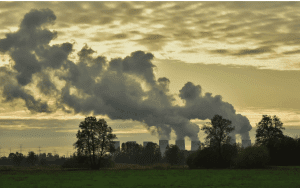

Global Warming Is Due to Power Plants
One significant source of global emissions is the combustion of fossil fuels for energy production. Carbon dioxide and nitrous oxide, produced from coal, oil, and gas combustion, blanket the Earth and trap heat from the Sun.
Wind, Sun, and other forms of natural energy provide just over a quarter of the world’s electrical needs while emitting almost no pollution or greenhouse gases compared to fossil fuels.
Producing Finished Goods
To create energy to make items like cement, iron, steel, electronics, plastics, clothing, and so on, factories and industries consume fossil fuels, resulting in emissions. Other industries, such as mining, manufacturing, and building trade, also contribute to atmospheric gas emissions.
Coal, oil, and gas are commonly used to power the machines used in manufacturing, and chemicals required to create various products, such as plastics, are derived from fossil fuels. The production sector is a major source of global greenhouse gas emissions.
Clearing Wooded Land
Forest clearance for agricultural or grazing purposes or other uses results in carbon emissions because felled trees release their stored carbon. Every year, we lose almost 12 million acres of forest.
Because trees soak up CO2, cutting them down reduces nature’s ability to keep pollution at bay. One-fourth of the world’s greenhouse gas emissions are attributable to deforestation, agriculture, and other land-use changes.
Making Use of Transport
Food Deficiency in Future: Is There a Basil Shortage in the US ?
In the transportation industry, fossil fuels are the norm. This means that transport is the major factor of global warming due to its high carbon dioxide output. Since petrol and other petroleum-based products are burned in internal combustion engines, most of these emissions come from automobiles on the road.
However, air and seaborne pollution keep increasing. Close to a quarter of all carbon dioxide emissions worldwide are caused by transportation. As a result, transport is expected to consume a greater share of the world’s energy in the years ahead.
To Feed the World
Deforestation and land clearing for agriculture and grazing, cow and sheep digestion, fertilizer and manure production and use, and energy use to run farm equipment or fishing boats; greenhouse gases like carbon dioxide and methane are released during food production, often using fossil fuels.
These contribute to agriculture being one of the primary drivers of climate change. The transportation and storage of food also cause greenhouse gas emissions.
Energy for Structures
Over half of all electricity produced is consumed by buildings, most of which are residences and businesses. Using a lot of fuels like coal, oil, and natural gas for HVAC causes carbon dioxide and other greenhouse gas emissions.
Rising heating and cooling needs, more air conditioner ownership, and higher power use for lighting, appliances, and connected devices have all contributed to increased carbon dioxide emissions from buildings in recent years.
Inappropriate Intake
Greenhouse gas emissions are influenced by several factors, including your home and energy use, how you get around, what you eat, and what you throw away. Fashion, technology, and plastic use all contribute to this.
Households are responsible for a sizable portion of the world’s greenhouse gas emissions. The Earth is suffering greatly because of the way we live. The richest 1% of the world’s population is responsible for all the world’s major problems, especially global warming and more greenhouse gas emissions than the bottom half.
It’s easy to forget that environmental degradation has a human cost in the form of starvation, migration, unemployment, illness, and death.
Two instances of the severe effects of extreme weather events enhanced by climate change are the prolonged drought in sub-Saharan Africa and the deadly tropical storms sweeping around Southeast Asia, the Caribbean, and the Pacific. South Korea, Algeria, and Croatia have all seen devastating fires due to high temperatures, while heatwaves have hit Europe.
Devastating floods have hit Pakistan, while a prolonged and intense drought has left 1 million people in Madagascar undernourished.
The damage that climate change has already done and will do in the future makes it a code-red humanitarian emergency. It’s not all bad news, either.
Let’s say we’re serious about stopping the end of the world and aim to limit global warming to 1.5 degrees Celsius. (IPCC), The world’s preeminent climate change science agency has recommended that greenhouse gas emissions peak in 2025 and decrease by 43 percent by 2030 to prevent catastrophic climate change.
Tips for Keeping Seniors Safe From Scammers
How Does Climate Change Impact Life,
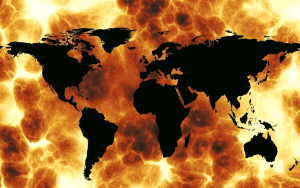

Human rights are directly affected by climate change since it poses a threat to the environment and our well-being. It will have disastrous long-term effects, both now and for future generations.
Because of this, governments’ inactivity on the climate crisis in the face of clear scientific facts may constitute the worst infringement of human rights between generations.
Climate Change and Human Rights
The right to life includes the freedom to live without fear for all people. Billion people all over the world are in danger because of climate change. Examples such as storms, floods, and fires are fairly easy to spot.
Some threats associated with global warming are more obvious than others. The international community estimates that by 2050, 250,000 lives will be lost annually due to climate change.
Health and Global Warming
Everyone has the right to the best possible bodily and mental health. According to the IPCC, some of the most significant health impacts of climate change include
- An increase in the danger of undernourishment due to decreased food production in poor locations,
- An increase in the danger of disease from food and water, a
- An increase in the danger of vector-borne diseases;
- And more repetitive and severe heat waves and fires.
Traumatic experiences, such as natural disasters exacerbated by climate change, increase the risk of developing post-traumatic stress disorders in people of all ages, especially children. All ages, but notably young people, might suffer from stress disorders.
A home that is comfortable and secure, able to meet one’s family’s basic needs, is a fundamental human right. But people already have to abandon their homes because of climate change-related disasters like floods and wildfires. Rising sea levels create chances for some, threatening the homes of millions of people in low-lying territories worldwide. Still, drought can have similarly catastrophic impacts on the ecology.


Access to Pure Drinking Water and Sanitary Facilities in a Warming World
Everyone has the right access to safe drinking water and sanitary facilities. Melting snow and ice, reduced rainfall, greater temperatures, and rising sea levels all contribute to climate change, affecting the quality and amount of water sources. About 785 million people worldwide do not have access to basic sanitation.
When Will the Weather Stop Being so Fickle?
- Incorporation of fossil fuels
- Caused by farming methods and the clearing of forests.
- Modifications in Land Use
The average temperature around the world has always been quite variable. But the speed with which the temperature has been rising recently is unprecedented. Anthropogenic activities have led to an augmentation in the concentrations of greenhouse gases inside the natural environment. They are causing an unsustainable increase in global warming.
Combustion of natural mine fuels, including coal, oil, and gas, is the primary source of economic emissions. It’s the main cause of global warming, accounting for over 70% of all emissions.
The second carbon dioxide emissions, agriculture and forestry, are responsible for 23% of worldwide GHG emissions, as reported by the IPCC. About 40% of these emissions come from the digestive process of ruminant animals, including cattle, sheep, and goats. Human land use causes deforestation, forest degradation, and forest fires, which are significant causes of greenhouse gas emissions. Practises that strongly link agro-industrial food systems include:
- Clearing forests to make way for commercial cattle ranches.
- Growing feed crops like soy.
- Setting up palm oil plantations.
Due to the heavy rains, a young mother and her child in the Beledweyne region of Somalia were driven from home to a makeshift tent. Hundreds of Somalians have been made vulnerable and forced to relocate due to climate change-related floods and droughts.
How do Various Communities Cope With the Effects of Climate Change?
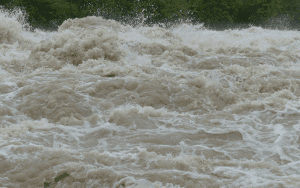

All of us will continue to feel the harmful effects of climate change until governments do something about it. In particular, it will have far-reaching consequences for marginalized and prejudiced populations and groups.
This is not limited to but also includes:
- Those in underdeveloped nations, and especially those in seaside communities and island states,
- Some of the most vulnerable people to climate change are those living in low-lying, small island states and less industrialized countries. Those who have contributed the least to climate change frequently suffer the most from its consequences.
- These places’ political and social characteristics make them more likely to be hit by floods, earthquakes, and natural disasters. In particular, lower-income countries’ ability to adapt to the negative effects of climate change has been hampered by the lingering legacy of colonialism and the history of unequal allocation of resources among countries.
- Pakistan, which is responsible for barely 0.4% of historical emissions since 1959, was judged by the World Bank and the Asian Development Bank to be one of the most climate-sensitive countries in the world. At least 1,600 people died, and $10 billion in property was damaged by floods in 2022.
Problematic Regions for Environmental Racism
Climate change and fossil fuel-related pollution disproportionately affect people of colour and other marginalized groups who experience racism based on race, religion, or language when environmental policymaking excludes these groups or prevents them from taking leadership roles in the environmental movement.
People of colour and people with low incomes are overrepresented in areas of North America, surrounded by polluting factories, including power plants and refineries.
They have significantly higher than normal incidence of cancer and respiratory illness. African Americans have a mortality rate three times greater than the national average because of their prolonged exposure to polluted air.
Ladies and Young Ladies in Need
Girls and women are sometimes pushed into careers and roles that make them more reliant on the natural world against their will. These people are particularly vulnerable because of limitations in their ability to acquire resources for adapting to climate change, such as money and knowledge. That makes them more vulnerable to climate-related disasters. It will be harder for them to recover from them.
Children
Children and adolescents are disadvantaged because they have special metabolic, physiological, and developmental needs. Children are especially more affected by the negative effects of displacement, which can have far-reaching consequences for their health, safety, education, and development when they are uprooted from their homes and communities without warning.
What About Environmental Fairness?
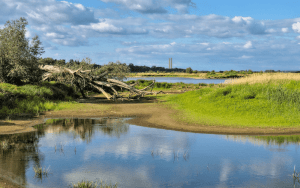

To highlight the problems of fairness brought by the climate catastrophe and the need for equitable policy responses, the term “climate justice” was coined by non-governmental organizations and social movements.
Climate justice solutions investigate the core causes of the climate crisis and how climate change exacerbates existing disparities.
Its demands are based on the urgent need to address these inequities and injustices, starting with giving a central role to the opinions, knowledge, and experiences of people whom the climate crisis will hardest hit.
Achieving climate justice requires addressing inequalities across race, class, ethnicity, age, and ability.
How Significant is This Change in Energy, and Why?
Let’s pretend the world can cut its emissions of greenhouse gases by 43% by 2030 and eliminate them by 2050. In such a situation, we must immediately replace our current fossil fuel-based energy infrastructure with one based on renewable energy sources.
Governments in the current era are responsible for spearheading the transition to renewable energy sources and proven green technologies by providing solutions that do not endanger people or the planet.
This is something they can put off in the next generation. Governments should require enterprises to safeguard human rights during the energy transition.
Negative repercussions of the battery boom are being felt by some populations, including those in the ‘Lithium Triangle’ (Argentina, Chile, and Bolivia) and the cobalt-mining region. Adolfo Luj A.
What are the Potential Strategies for Mitigating Climate Change?


Climate change is currently occurring and represents a paramount peril to life on Earth. Fortunately, many options to address climate change exist, and they are widely comprehended.
In 2015, global leaders convened to endorse a significant accord known as the Paris Agreement, aiming to implement the solutions above.
At the heart of all climate change mitigation strategies lies the imperative to decrease the emission of greenhouse gases, ultimately striving to achieve carbon neutrality at the earliest feasible opportunity.
Due to the crucial responsibilities that forests and seas fulfil in climate regulation, enhancing their inherent capacity to sequester carbon dioxide might effectively mitigate global warming.
One of the primary strategies for mitigating climate change involves exerting pressure on governmental and corporate entities to:
Fossil fuels: Maintaining fossil fuels in their natural underground reservoirs is imperative. Fossil fuels encompass coal, oil, and gas, and their extraction and combustion exacerbate climate change. All nations must transition their economies away from reliance on fossil fuels expeditiously.
Renewable energy sources: It is advisable to allocate resources towards investments in renewable energy sources. Transitioning our primary energy sources to environmentally sustainable and renewable alternatives is the most effective approach to curb our reliance on fossil fuels. The technologies above encompass solar, wind, wave, tidal, and geothermal power.
Transitioning to sustainable transport is crucial to achieving environmental and societal sustainability. Fossil fuels are utilized by several modes of transportation, including petrol and diesel automobiles, aeroplanes, and ships. Adopting strategies such as decreasing automobile usage, transitioning to electric cars, and limiting air travel holds the potential to mitigate climate change and alleviate air pollution.
Please assist us in maintaining a warm and comfortable living environment within our residences. The presence of draughts and chilly temperatures in residential dwellings is undesirable due to the financial inefficiency it entails and the discomfort it causes during the winter.
The government has the potential to assist people in adopting environmentally friendly methods of heating their houses, which include implementing measures such as insulating walls and roofs, as well as transitioning from oil or gas boilers to heat pumps.
Enhance agricultural practices and promote the adoption of vegan dietary patterns. One effective approach for individuals to mitigate climate change is to adopt dietary practices that involve lowering meat and dairy intake or embracing a vegan lifestyle.
To facilitate the transition towards plant-based diets, businesses and food retailers have the potential to enhance farming methodologies and expand their offerings of plant-based products.
Enhance natural ecosystems to increase carbon sequestration. The natural environment possesses a remarkable capacity to mitigate and remove anthropogenic emissions, yet humans must assume responsibility for its preservation and maintenance.
Initiating tree planting initiatives in appropriate locations or implementing rewilding programmes to restore land to its natural state are effective initial steps. Photosynthetic plants can reduce atmospheric carbon dioxide levels during their growth process, sequestering it within the soil.
Implementing measures to safeguard forested areas, such as the Amazon rainforest, is imperative. Forests have a basic role in mitigating climate change, making their preservation a significant component of climate solutions. Large-scale deforestation operations destroy substantial trees that possess the capacity to sequester significant quantities of carbon dioxide.
However, corporations use deforestation to clear land for animal agriculture, soybean cultivation, or palm oil plantations. Governments possess the ability to impede these entities by enacting more effective legislation.
It is imperative to prioritize the conservation and preservation of marine ecosystems. Oceans have a significant role in absorbing substantial quantities of carbon dioxide from the atmosphere, contributing to maintaining climate stability.
However, many of these marine resources are subject to overfishing, utilized for oil and gas extraction, or face the risk of being adversely affected by deep-sea mining activities. Safeguarding marine ecosystems and their biodiversity serves as a means to safeguard humanity from the impacts of climate change.
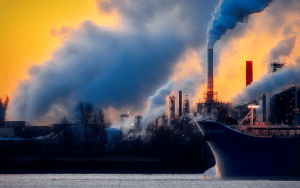

Minimize the level of consumption among individuals. The various aspects of our daily lives, such as transportation, fashion, food consumption, and other lifestyle decisions, influence the climate. This phenomenon is frequently intentional, as exemplified by fashion and technology enterprises, which tend to introduce a significantly greater number of items than pragmatically required.
However, although decreasing consumption of these products may present challenges, they undoubtedly hold significant value. The mitigation of environmental strain can be facilitated by reducing overall consumption in affluent nations.
Minimize the usage of plastic materials. Plastic is derived from petroleum, and the procedures above of oil extraction, refining, and plastic production (including polyester for textiles) have a notable carbon-intensive nature. Plastic exhibits a slow rate of decomposition in natural environments, necessitating its disposal through incineration, hence leading to the release of pollutants.
The escalating demand for plastic is exhibiting a rapid upward trajectory to the extent that the production and disposal of plastics are projected to contribute almost 17% of the worldwide carbon budget by the year 2050. This carbon budget represents the prescribed emissions limit that must be adhered to as stipulated by the Paris Agreement.
Many individuals may experience a sense of being overwhelmed and perceive climate change as an insurmountable challenge. However, the solutions to the problem have already been identified.
The current challenge lies in implementing these solutions effectively. To effectively address the challenges, it is imperative to establish robust international collaboration among governments and businesses, encompassing even the most environmentally detrimental industries.
Individuals can contribute to sustainability efforts by making informed decisions regarding their energy sources, transportation methods, and dietary choices. However, collective action is the most effective approach for individuals to mitigate climate change. This entails exerting pressure on governmental bodies and corporate entities to modify their policies and operational strategies.
Governments are motivated by the desire to secure re-election. Businesses are only able to sustain themselves in the presence of clients. Requesting action from individuals can be an influential approach to facilitating change.
The fossil fuel sector is impeding efforts to address climate change.
Prominent oil and gas corporations such as BP, Exxon, and Shell have allocated substantial financial resources, amounting to hundreds of millions of pounds, in endeavours aimed at impeding or postponing governmental initiatives designed to address the pressing issue of climate change.
In light of the increasingly evident impacts of climate change, prominent firms with substantial carbon emissions persist in pursuing fossil fuel extraction and combustion.
Various industries, such as banking, automotive, and energy sectors, derive financial gains from fossil fuels. These sectors prioritize financial gain at the expense of our planet’s long-term sustainability and its inhabitants’ well-being.
What Measures Are Global Leaders Undertaking To Mitigate The Effects Of Climate Change?


Given the magnitude of the catastrophe affecting the global population, the international reaction must be prompt and resolute. However, the pace of development made by governments worldwide could have been much better.
Numerous pledges to mitigate carbon emissions have been established, although many of these commitments are enforceable, resulting in frequent non-compliance with specified targets.
In 2015, a gathering of global leaders from 197 nations took place in Paris when they committed to prioritizing the well-being of individuals and undertaking measures to decrease greenhouse gas emissions in their respective countries.
The main cause of the Paris Agreement is to effectively restrict the increase in world average temperature to a level much below 2 degrees Celsius, with an optimal target of 1.5 degrees Celsius.
Suppose nations promptly fulfil their commitments outlined in the Paris Climate Agreement and implement the proposed remedies. In that case, mitigating the most severe repercussions of climate change remains possible.
World leaders and climate negotiators convene at the annual Conference of the Parties (COPs), a gathering of nations that have ratified the United Nations Framework Convention on Climate Change (UNFCCC).
During conferences such as the Conference of Parties (COPs) and other climate negotiations, participating nations assess their capacity to fulfil their obligations in terms of emission reduction.
Recently, there has been a notable emphasis on discussions about climate finance, which primarily concerns allocating funds to support economically disadvantaged nations in their efforts to mitigate climate change impacts and curtail greenhouse gas emissions.
Developed nations have committed to providing annual financial assistance of $100 billion to support developing nations in their endeavours to mitigate emissions and effectively address the consequences of climate change. This outcome has yet to be realized, and substantial further funding is required.
With the escalating implications of climate change, there has been a consequential initiation of discussions over funding for “loss and damage.” The funds in question are the financial resources that nations severely affected by climate change require, specifically to address the consequences of extreme weather events and other related repercussions.
Activism About Global Climate Change
Across the globe, many individuals are actively engaging in efforts to safeguard the Earth’s climate. Individuals across various age groups and socio-economic backgrounds fervently advocate for viable resolutions to address the pressing issue of the climate emergency.
With time, Greenpeace has actively confronted oil corporations in pursuing novel fossil fuel resources for extraction and subsequent combustion.
The governments have been criticized for their delayed response to the climate emergency. Greenpeace activists are those who engage in exceptional efforts to advocate for and promote solutions to the issue of climate change.
Indigenous communities are disproportionately vulnerable to the effects of climate change, both in terms of the factors contributing to climate change and its consequences. These individuals frequently find themselves at the forefront, confronting the issue of deforestation or expelling fossil fuel industries contaminating their water sources.
The Pacific Island communities are facing the challenges of rising sea water levels and increasingly extreme weather patterns. However, individuals are harnessing their physical and mental fortitude to advocate for expedited climate action from global policymakers.
For several communities, the battle against climate change represents a struggle for their existence.
Climate change is more severely impacting those residing in the United Kingdom. In light of its substantial resources and influence, it is imperative for a nation to actively advocate for measures aimed at addressing climate change.
Here Are Ten Common Misconceptions About Global Warming.


1: The Climate Of Earth Has Always Fluctuated.
The Earth’s 4.5 billion years of existence have seen significant climatic shifts. That’s the way it is. However, current warming rates cannot be explained by cyclical changes in temperature alone. In decades, we have seen changes that would ordinarily take hundreds of thousands of years.
The current global temperature is the highest on record. In fact, since 2001, 17 out of the 18 warmest years on record have occurred.
This accelerated warming is in line with the rising atmospheric carbon dioxide concentrations observed since the advent of industrialization.
Thus, modern usage indicates that “climate change” refers to climate shifts caused by human activities. This refers to the global average temperature increase resulting from human activities, such as using fossil fuels for electricity and transportation and cutting down forests for agriculture.
2; Co2 Is A Necesity For Plants
Carbon dioxide is essential for plant life. Every year, plants and forests take in and store away a massive amount of carbon dioxide. However, as more and more forests are cleared worldwide, mostly to meet our growing food demands, the quantity of carbon dioxide they can absorb is decreasing.
To be clear, carbon dioxide (CO2) is not the problem. It’s a vital component of the planet’s natural balance. The problem is the amount of carbon dioxide we release into the atmosphere; this much CO2 has yet to be seen in the environment in 800,000 years.
3: It’s Too Cold To Be Caused By Global Warming.
The Earth’s surface’s average temperature is rising due to global warming. This alters our natural climate systems and increases the likelihood of heat waves and droughts. These changes are amplifying the frequency and intensity of extreme weather events. Shifts. Hurricanes and other storms, for instance, are growing more powerful, taking longer to move, and fading out later.
Our geographical positioning suggests that New York City will witness more snow due to climate change. In contrast, the United Kingdom and Ireland will see more rain and wind.
4: Climate Change Is a Problem of the Future
This can no longer be used as an excuse to put off dealing with climate change until later generations have to deal with the consequences.
Last year, scientists worldwide warned that we have 12 years to reduce global warming to 1.5 degrees Celsius.
If we don’t take immediate action, climate change will have much more disastrous repercussions on global food shortages, migration, conflict, illness, and global instability.
Climate change caused by humans is currently the most pressing ecological issue. The future of the Earth, on which our lives rely, is in jeopardy, and we are the last generation with the power to do anything about it.
5. Renewable Energy Is Just A Money-Making Plan


The myth that renewable energy sources are too expensive to be practical must be dispelled. Solar and onshore wind power generation is more cost-effective than nuclear, natural gas, and fossil fuels per unit of energy produced.
The price of alternative energy sources has dropped more quickly than anyone anticipated. The government, meanwhile, continues to support polluting fossil fuels. Did you know the United Kingdom has Europe’s highest fossil fuel subsidies? That’s true; each year, they shell out an astonishing €12 billion ($10.5 billion).
6 The Number of Polar Bears is Rising.
That is not at all true. The extinction of polar bears is most at risk from global warming. The Arctic is warming at about twice that of the rest of the planet, resulting in earlier sea ice melting and later ice formation each year.
Female polar bears face greater danger when venturing onto the sea ice in the spring to gather food for their cubs than when heading to the interior to construct their dens for the next winter. Seals, a primary food source, are particularly vulnerable to climate change since they need sea ice to give birth and rear their young.
This means that polar bears in certain regions of the Arctic must make do with less food than they were used to. By mid-century, polar bear numbers are expected to have dropped by 30 percent.
7: Renewable Power Is Useless When It’s Cloudy Or Windy
Modern power storage innovations and peak-load management allow businesses to rely on renewable energy sources without a breeze or bright sunshine.
The National Grid is the source of electricity for the vast majority of UK residences. When you move to a green energy provider, they promise to replenish the amount of clean energy you use from the Grid with every transaction.
8: Wildlife will Naturally Adjust to Climate Shifts
Darwin was correct about adaptation, so this is not a myth. However, it should be made known that not all plant and animal species will adapt.
Plants, animals, and birds facing the effects of climate change have two options for survival: relocation or adaptation. Several animals have shown signs of adapting to the changing climate.
But more and more people find that far from the case. Due to the rapidity of climate change, Many species find it challenging, if possible, to adapt to the changing environment fast enough.
And as roads, urbanization, and dams destroy habitats, it gets harder and harder to relocate. The future could look better for individuals who are immobile or resistant to change.
9: Eradicating People Will Solve the Problem
We find this to be completely unacceptable. It’s easy to feel that we’ve already gone too far and that Earth can’t possibly sustain the world’s expanding population.
To create a world where humanity and wildlife may coexist and prosper is WWF’s raison d’etre. By 2045, we will have the technology and mechanisms to run entirely on renewable energy while responsibly using the Earth’s limited resources.
To combat the climate problem and repair the environment, government and commercial leaders must now take immediate, decisive action.
10. Only China Can Be Held Accountable for the Current climate crisis.
China is currently one of the top investors in renewables despite being one of the largest emitters of greenhouse emissions. The increased spending is a direct result of the burgeoning eco-business sector and the pressing need to reduce air pollution in major urban areas.
We should all do all we can to combat climate change because it affects everyone. It will require significant resources to be put into action. Still, it will potentially yield enormous gains for the environment and humanity. To save our planet, we must all speak out.
Climate Change is a Fraud?


Politicians, activists, and incompetent scientists widely perpetrate the HOAX of climate change (also known as “Global Warming”) on Americans. True scientific findings and supporting data are downplayed or manipulated to fit a predetermined political agenda.
Scientists’ “peer review” comments that questioned the IPCC Assessment Reports (AR1 through AR5) were altered or removed by organizations like the United Nations Intergovernmental Panel on Climate Change (IPCC).
Late in 2009, a whistleblower disclosed thousands of emails from IPCC’s top-level scientists. Herein are revealed their “unethical attempts to suppress contrary opinions and publications from climate skeptics.”
In November 2009, a “Climategate Scandal” revealed how scientists had manipulated data to cover up the cooling of the atmosphere since 1980. The mid to late 1990s marked the end of global warming. According to the data, temperatures have been falling since then.
Sunlight is the basic source of heat for Earth. Therefore, the Sun is the primary driver of Earth’s climate. Sunspot activity records give a wealth of information.
Active “cycles” can stretch from the Little Ice Age to the present decade. We call these patterns “Relational cycles.” One cyclical relationship is the “Dalton Minimum” around 1793. The Sun’s heat output drops or goes into solar slumber during these periods.
The fact that humanity has not and cannot alter the Sun’s natural cycles is the “bottom line” of this discussion. Global warming is a political fabrication with no foundation in science or data.
Here are Ten Theories Debunking Climate Change.
A few years ago, Al Gore was the one who started all the hubbub about climate change and global warming. The wagon’s impacts were projected to become more noticeable in 2014. Some predicted it would be the warmest year on record, but that did not happen.
What threats does global warming pose?
Why does everyone seem to be so worried about this?
Global warming’s effects on the economy could be devastating.
When cold weather arrives, people tend to relax their guard, mistakenly believing that the temperature isn’t as low as it is.
Many marine and terrestrial species are in danger due to global warming.
The negative effects of global warming on mountains and other natural resources are uncertain.
The issue of global warming is not one we should take lightly. It comes with a wide variety of potential dangers. However, you shouldn’t worry too much about global warming because, in reality, it isn’t happening.
Let’s look at the top ten reasons climate change is a massive fraud. After reading this, you’ll have a better idea of whether or not you accept the hype or whether or not you concur with the prevailing opinion that it’s all an elaborate hoax.
1: Ice Records
If global warming occurred, less ice formation than in prior years would be expected. Several temperature records were established in 2014. The amount of ice found in Antarctica is one example. Also, for much of the year, Lake Superior was frozen over. The lake was ice-free for only three of the twelve months. When deciding whether or not global warming is a serious threat, consider these and other examples of record-breaking ice.
2: Chilly Weather


Forecasts of record-breaking heat were well off the mark. 2014 was a record-breaking year for low temperatures. Don’t forget the “Polar Vortex” that hit the United States the same year.
3; This Year’s Snowfall Totals have Broken All Previous Records.
Many parts of the world experienced snowfall. Furthermore, many of these locations experienced snowfall amounts that set new records. When snowfall totals continue to break records in many parts of the world, how can we be experiencing a rise in global warming?
4: It’s in the Bears’ Best Interest.
Many different kinds of animals would be in danger if global warming were to occur. The polar bear is one species that would be severely impacted. The polar bear population is doing fine in its natural environments and is not currently threatened.
5: The Oceans Are Rising
Contrary to what Al Gore projected, the sea level is not increasing. In 2010, he predicted sea levels would rise by nearly 20 feet. But sea levels are maintaining a rather steady, normal range so far.
5, Thriving Moose Populations
When the number of moose in Minnesota suddenly fell a few years ago, several theories were proposed. But scientists looked into the issue and found that wolves eating large mammals were the real culprit, not climate change.
7, Scientists Aren’t Buying Into the Hype for This Reason.
Scientists from all across the world would alert the public if there were an issue with global warming. There would be a much more interesting discussion than what we’ve had thus far. However, not every scientist is concerned about global warming or these allegations. It has been widely reported that only approximately 1% of scientists are concerned about global warming. Ninety-nine percent of people disagree with those who believe in global warming.
8, Carbon Sinks Exist, so the Argument Goes.
Carbon dioxide in the atmosphere is reduced thanks to carbon sinks. Despite annual increases in human-caused CO2 emissions, these sinks continue to manage the problem. NASA’s global CO2 measurements revealed that most of the issue originates in the tropical rainforests of China, South America, and Africa.
9. No Global Warming Has Occurred in a Very Long Time.
You can access the documents now. All the answers you need can be found with just a few clicks of your mouse on the internet. Looking into it, you’ll find many years with higher temperatures than 2014. In addition, you will find out that the last global warming report occurred more than 18 years ago. Whoa, that’s a substantial amount of time!
10, Just Look At NASA, For example.
Those who support Al Gore’s global warming claims are also intelligent. However, NASA is the granddaddy, the go-to place for facts and figures. Furthermore, NASA has assured us that the planet’s warming is nothing to be concerned about. Since ice sheets are still being formed in large numbers, there is little reason for alarm now. Since the claims of global warming began, NASA has performed multiple studies, and each time, they have provided solid evidence for why we have nothing to worry about.
Is There Anything Else That Makes You Think it’s a Hoax?


We have compiled ten compelling arguments against global warming to help ease your mind. If you’re interested in checking out the data, it’s all there to view. These are only a few arguments against global warming, which have considerable weight. Let’s examine some of the evidence that keeps proving that the concept of global warming is bogus.
A spectacular lunar eclipse occurred in September 2015, and many people could see it. The eclipse made the sky appear darker than usual to them. This is evidence that the planet is cooling down, not warming up.
Winter arrived early for many people living in St. John’s, Newfoundland. This is another evidence that there is no reason to be concerned about global warming.
In 2014, record-low temperatures were established in three different locations around Kentucky. Louisville, Frankfort, and Bowling Green were the cities in question.
Concluding Remarks:
Just pause and consider this: Al Gore and some who follow him are paid to make assertions. They are, without a doubt, being paid a fair sum for their services. It goes to reason that if someone has something to gain from making a claim, they will make that claim and be willing to back it up. When processing information, it’s important to think about where it came from and what the source stands to gain.
However, the data from real temperature measurements presents a different picture: there have been both warm and cold periods since the turn of the century. However, there is no discernible pattern in the century-long record of global temperatures that would indicate a runaway increase.
The ten points listed above only scratch the surface of the deception that is global warming. Don’t believe the rhetoric that global warming spells disaster for the world you call home.
Incredible Statistical Trickery Fueling Concerns About Global Warming:
Despite its uninspiring moniker, the National Oceanic and Atmospheric Administration (NOAA) performs a crucial service by monitoring weather patterns across the United States. Unfortunately, it appears to be a captive of the religion of global warming.
Its information is phoney.
The Term “Fraud” Refers to What Exactly?
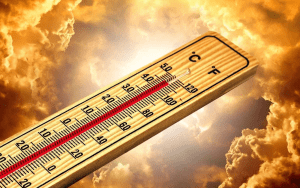

Here’s an example: NOAA has made numerous “adjustments” to its data sets, ostensibly to improve their accuracy based on scientific principles.
There’s no reason to doubt that.
However, all of these shifts point in the same direction, with lower temperatures in the past indicating cooler weather and higher temperatures in the present indicating warming.
Since the mid-1800s, there has been a steady rise in CO2 levels in Earth’s atmosphere, and global warming proponents argue that this is a direct cause of the observed temperature rise. Greater carbon dioxide equals greater heat.
However, the data from actual temperature measurements reveals a different picture: Since the turn of the past century, there have been both warm and cold decades and years. However, the average temperature reading indicates no clear trend.
Resulting Harm
The failure or inability to take adequate measures to lessen the impact of global warming has been exacerbated by conspiracy theories about climate change. Forty per cent of U.S. adults felt (ca. 2017) that climate change is a fraud, despite a 2019 research finding unanimous agreement among climate experts that this is not the case.
According to the findings, “exposure to conspiracy theories reduced people’s intentions to reduce their carbon footprint, relative to those given refuting information.”
Even though the Paris Agreement was established to limit global warming, U.S. President Donald Trump withdrew his country from it in 2019. Some parts of the world may adhere to a climate change denial worldview, which could cause strife when deciding what to do about the issue.
According to a professor of communication sciences at Catalonia’s Open University, climate change scepticism is rising. This is especially true for those who identify with the far right.
Some people who don’t believe in climate change have made threats against meteorologists, saying that they are to blame for the drought and are selectively utilising warmer weather stations to misrepresent the full picture of global warming.
There was a dramatic spike in doubters’ angry, threatening, harassing, and personally abusive comments towards climate scientists after Elon Musk’s 2022 takeover of Twitter, when key figures in the firm who ensured trusted content was prioritised were removed.
Criticism
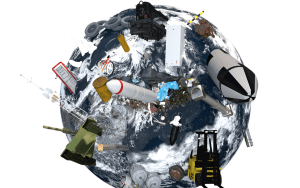

According to Steve Connor, who conflates “hoax” with “conspiracy,” “Reading through the technical summary of this draught (IPCC) report, Nobody could walk away from this thinking that climate change is a fraud perpetrated by the scientific community, as some would have us believe.
- Experts in the field were highly critical of the documentary The Great Global Warming fraud. According to George Monbiot, the notion above might be characterised as a recurring conspiracy idea propagated by the denial business over the last decade.
- Monbiot asserted that there are prevalent conspiracy theories aimed at concealing the truth, encompassing a wide range of actors such as the scientific community, Shell, Greenpeace, The Sun, and Science.”
- The recurring conspiracy hypothesis, which has been consistently propagated by the climate change denial industry over the last decade” as George Monbiot phrased it.
- Monbiot said, “He was referencing an essay by James Delingpole in the Spectator. Australian meteorologists also weighed in, saying the film didn’t even try to give a “critical deconstruction of climate science.”
- Orthodoxies,” instead using a variety of techniques to imply that climate scientists are dishonest or badly off base in their beliefs. Publicists for the film claimed that “global warming is ‘the biggest scam of modern times,’
- These meteorologists found that the video was The argument lacks scientific rigour and offers an erroneous and very deceptive interpretation of the scientific findings. The user’s text needs to contain information to rewrite academically.
- There will consistently exist individuals who espouse conspiracy theories in an attempt to undermine the established scientific consensus. While this phenomenon is inherent to both scientific and democratic discourse, the scientific evidence supporting climate change appears undeniably factual from my perspective. The user’s text needs to contain information to rewrite academically.
- Six widely held yet unfounded scientific conspiracy ideas were investigated by National Geographic. They observe that contrary to popular opinion, the Earth is still warming, and the rate of warming is increasing, as has been verified by various scientific studies.
- The increase of greenhouse gases in the atmosphere due to human activity parallels the increase in global temperature and its rate of increase. Many plant species are flowering ahead of schedule, and the migration patterns of many birds, fish, animals, and insects are shifting due to global warming.
Funding
Some individuals making these claims appear to be part of well-funded disinformation initiatives meant to create an artificial dispute, discredit the scientific consensus on climate change, and minimise the expected consequences of global warming.
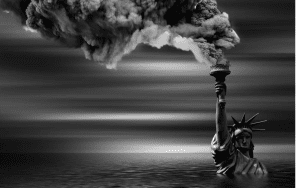

After most scientists had concluded that global warming was real, the dispute was kept alive by individuals and groups. These uncertainties have impacted Canadian and American officials, and the resulting policies reflect this.
Since the 1980s, a well-funded and coordinated campaign by free-market think tanks, industry, and dissenting scientists has spread paralysing uncertainty about climate change.
- First, greenhouse doubters (they dislike being called deniers) contended that the world is not warming; measurements showing otherwise are inaccurate. This was done through commercials, op-eds, lobbying, and media attention.
- Next, they argued that human activities are not to blame for any observed warming.
- They now argue that the predicted increase in temperature will be extremely small and completely safe.
- According to disgraced politician Tim Wirth, “They modelled what they did after the tobacco industry.” They led environmental issues under the Secretary of State in the Clinton administration. “Both thought, plant enough seeds of doubt, label the science uncertain and in dispute, and you’ve won.” That profoundly moved the public and lawmakers.
The Reality of Denial, Newsweek’s S. Begley
- In their ‘Exxon Secrets’ study, Greenpeace showed that the energy business was sponsoring those who deny climate change the Carbon.
- Brief was investigated in 2011 and showed that nine out of ten of the most prominent authors who deny or speak out against climate change had financial ties to ExxonMobil.
- Greenpeace said the Koch brothers had spent over $50 million over the previous half-century discrediting climate science. Despite saying it would cut funding,
- In 2008, ExxonMobil challenged the scientific consensus on global warming and criticised measures to address this pressing issue alongside around twenty-four other organisations. The user did not provide any text to rewrite.
- According to a study undertaken by the UK Royal Society in 2005, ExxonMobil donated $2.9 million to 39 organisations that were found to have misrepresented the scientific understanding of climate change through the explicit denial of the available evidence.
- The government should implement stricter regulations on the use of plastic bags.
For more detail click here,


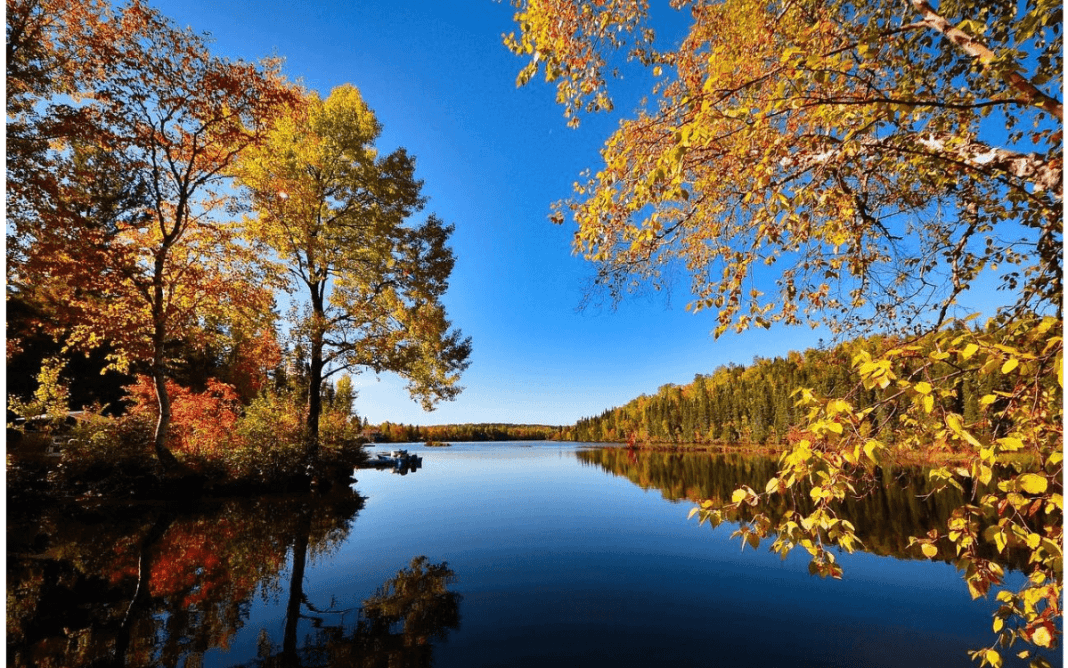


Good information 👍👍